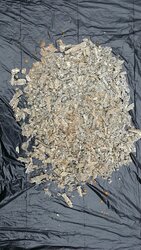In 2009 when I moved my Tarm w/1000 gal storage tank to my new shop, I used Mike's boiler water treatment for my system when I refilled the system. My system is a pressurized-closed system, and I have added very little new water since, mostly to replace very small losses when I have done some plumbing maintenance, and I have never had it retested.
Looking at your statement regarding nitrate, I needed to refresh my memory as to why this is important. A quick search found that nitrite acts as an oxygen inhibitor (not a scavenger):
"The major problem in low-pressure heating systems is corrosion caused by dissolved oxygen and low pH. These systems are usually treated with an inhibitor (such as molybdate or nitrite) or with an oxygen scavenger (such as sodium sulfite), along with a synthetic polymer for deposit control. Sufficient treatment must be fed to water added to make up for system losses, which usually occur as a result of circulating pump leakage. Generally, 200-400 ppm P-alkalinity is maintained in the water for effective control of pH. Inhibitor requirements vary depending on the system."
http://www.gewater.com/handbook/boiler_water_systems/ch_11_preboiler.jsp
... and this from Mike's website:
"Nitrite Test Kit - The best in accuracy, this kit includes everything to perform +/- 10 tests with complete instructions. Regularly checking your system assures that your system is properly treated. This method directly tests chemical level. This is the testing method that we recommend for maintaining your system with the proper level of Treatment Solution 101, 500-1000ppm of Nitrite. 500-750ppm is adequate for most fill waters while a residual of 750-1500 gives maximum protection."
http://www.woodboilersolutions.com/testing_solutions.cfm
Because the Garn is an open system, it seems that maintaining an appropriate level of oxygen inhibitor is important. I assume that the anode rod problem is unrelated to the oxygen inhibitor level.
There must be lots of air mixing with the water in the Garn to require frequent nitrite treatment. I'm wondering whether a separate open expansion tank, with a small vent, and then filling the Garn to the top, would help in limiting the water mixing with air. Open expansion tanks have been commonly discussed in this forum, and were common in old water boiler systems (the expansion tank in the attic).



